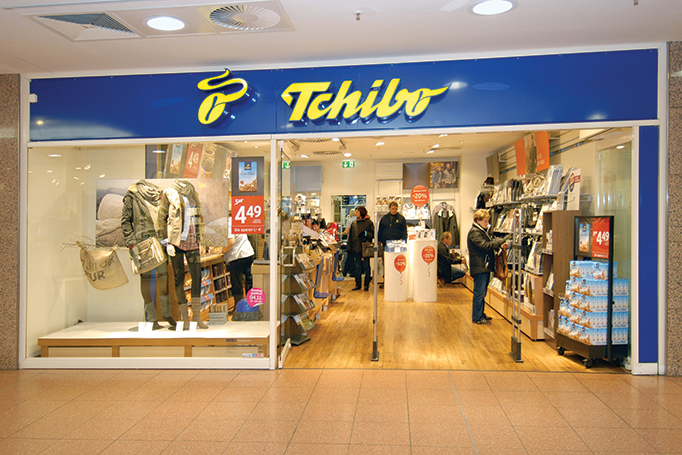
Some people like a cookie with their coffee, but Tchibo’s customers get a whole lot more. Tchibo, a German coffee chain that offers an assortment of high-value products in tiny outlets, is more than the leading roasted-coffee brand in Germany, Austria, Poland, the Czech Republic and Hungary. It is also one of Europe’s most popular nonfood retail brands.
Founded in Hamburg in 1949 by Max Herz and Carl Tchiling Hiryan, Tchibo is a €3.4 billion (about $3.7 billion) chain of about 1,000 stores — roughly 700 across Germany and the rest in Austria, the Czech Republic, Hungary, Poland, Slovakia, Switzerland and Turkey — plus store-within-a-store distribution units in some 16,500 grocery stores and retail outlets. The 12,500-employee business is still family-owned, by Herz’s widow and two sons, through Maxingvest AG, a holding company that also owns half of Beiersdorf AG, a skin-care company known for the Nivea brand.
“It’s a very successful model of cross-channeling,” said consultant Peter Harrer, of Foley Retail Consulting, in Vienna.
Not only is Tchibo the second-most-popular brand in Germany for hot beverages, it is also a major retailer in a variety of other categories. Harrer estimates that Tchibo generates roughly 70 percent of its revenue on the nonfood side, a figure that swells to 80 percent at Christmas. These nonfood lines are sold under the company’s private TCM (Tchibo Certified Merchandise) label. Many of the items change weekly and typically follow seasonal patterns. Further, Tchibo has branched into offering such services as travel packages and mobile-phone contracts.
In general, Tchibo declines to discuss real estate strategy. But typically, its stores are small — about 30 to 40 square meters (roughly 300 to 400 square feet), including product shelves, a coffee counter and a few stools. The company is experimenting with a 400-square-meter format, however. Tchibo’s online shop is the fourth-most-visited online shop in Germany, according to the 2014 Maxingvest annual report.
Beyond all the novelty, several other factors have helped make Tchibo’s food-and-product model work well, Harrer points out. The stores have managed to make efficient use of their small spaces, for one thing. For another, Tchibo already had an effective distribution system in place to move the coffee, and so the workers became used to managing quick turnover. Third, the company has a good understanding of the sorts of products consumers like, and last, the habitual nature of coffee consumption yields a strong base of repeat customers. “If you’re convinced to take this brand, it’s very hard to switch again,” Harrer said.
One of the most important strategic elements this business model has afforded, according to Harrer, is that
Tchibo is able to go with either a
coffee or a nonfood focus, depending on which side happens to offer the best price advantage at any given time. Last year’s results highlight the virtues of this sort of a hedged bet. In July Maxingvest announced that Tchibo’s revenues had declined by 2.7 percent for the fiscal year ended in June 2015, to €3.3 billion, due in the main to higher raw coffee prices. Overall earnings shrank to 5.7 percent from 6.3 percent, according to the 2014 annual report, but they would have been higher had they not been offset by growth in the company’s online nonfood business.
Now the company is trying to hedge its bets in other ways. Before 2013 Tchibo owned 90 percent of its outlets; today the company is turning toward a franchise model built upon what management learned from its 1997 acquisition of Eduscho, Austria’s dominant coffee retailer. Under this model, the franchisee pays the company some €10,000 for a share of profits, while the company builds, develops and designs the store, and assumes all inventory risk.
Harrer says it would be hard for another company to duplicate Tchibo’s success. “One, you’d need a good brand, and two, you’d need, on the nonfood side, quality management.”
Leasing agents may contact the company at standort@tchibo.de.